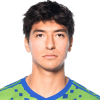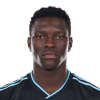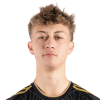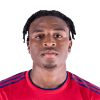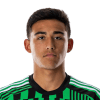Ok, it’s time to start ramping up our countdown-to-first-kick coverage, and rolling out our suite of season preview content before the Feb. 21 opener (and then Feb. 24 openers, plural). Here is the first from me, my annual look at each team’s most likely potential breakout player.
Bear in mind I have no real idea which players are going to get the call and answer the bell, especially since the Primary Transfer Window doesn’t close until April 23 – a few of these guys might not even be regulars by the time this winter’s wheeling and dealing is all said and done. So a lot of things can and will change, but it remains a fun thought exercise to look at each team's roster and try to identify some hidden gems, or guys about to make The Leap.
Per usual, I'm automatically ruling out first-year players and Designated Players for what I feel are obvious reasons. Western Conference today, Eastern Conference tomorrow. Reverse alphabetical order by club for fun.
Why he’ll break out: The kid’s got three lungs and a real talent for digging the ball out of the scrum.
If you were paying close attention to the ‘Caps last year (and you should’ve been – they were fun), you might feel like Ahmed’s already broken out. He made 30 appearances across all competitions, after all, and had mostly beaten out Austrian international and Bundesliga veteran Alessandro Schöpf for a starting role in midfield down the stretch.
But he played fewer than 2,000 total minutes and didn’t get a ton of buzz. And sadly he’s started the year with a groin injury, which has kept him on the sideline for the Concacaf Champions Cup home-and-home with Tigres (that would’ve been a very nice platform for a coming-out party). So still… no buzz.
I expect that to change when he gets healthy again.
What’s his upside this year: Ahmed covers every blade of… er, let’s say “grass”… in an old-fashioned, box-to-box ball-winner kind of way, and has more than enough skill on the ball to make that matter in the final third. Vancouver were just straight-up better with him out there last year. So, a full-time starter with serious interest from European teams.
Why he’ll break out: The ability to receive in traffic, drive forward and play the final ball.
As with Ahmed, if you were paying attention last year you probably feel like Jackson already broke out. He had a goal and four assists in MLS play, two more goals in the US Open Cup and more than 30 appearances across all competitions. And, in most of them, he did stuff like this:
Wins the scrum in midfield, plays the through-ball, presses up, wins the second ball, and picks up the assist. Beautiful.
What’s his upside this year: I think there are more minutes for him in that attack this year, and winning the starting job outright – then contributing, say, a dozen combined goals and assists – isn’t beyond him.
Why he’ll break out: Plays nasty, but mixes that with skill in distribution that Peter Vermes demands from his fullbacks.
Davis won the starting job in late spring of last year and never really looked back. To give you an idea as to how well-rounded his game is: he rated in the 91st percentile of all fullbacks for tackles, the 81st for interceptions, the 76th percentile for passes attempted, the 84th percentile for pass completion percentage and the 67th percentile for progressive passes (all stats via Opta).
He makes it easier for Sporting to advance upfield. He makes it harder for opponents to do the same.
What’s his upside this year: Barring injury, my guess is he’ll play something like 95% of all available minutes this year and be regarded as one of the top five RBs in the league among the sickos.
Why he’ll break out: Big, strong, two-footed, more technical than people realize and hits a gorgeous switch.
In my extraordinarily humble opinion, it took far too long for Brian Schmetzer to make Atencio the starter next to João Paulo in the deep midfield of Seattle’s 4-2-3-1 formation. I’m gonna let the data do most of the talking here:
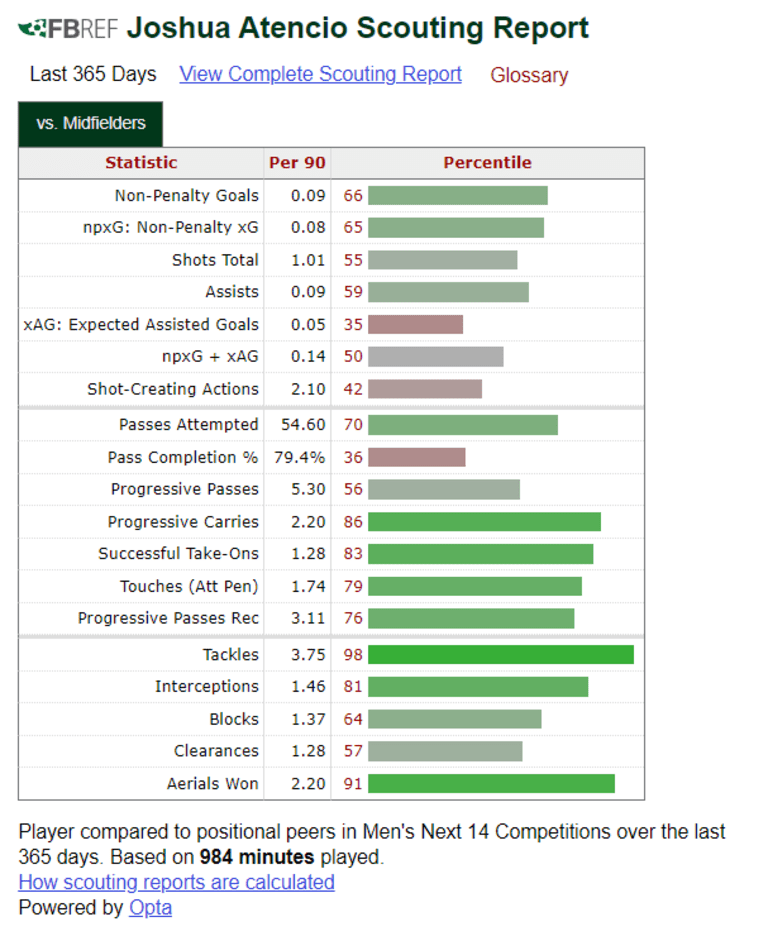
That’s a lot of green.
What’s not necessarily shown here is Atencio’s greatest attribute: his ability to switch the field of play early and accurately. Because of that, the Sounders got into their attacking patterns faster and had more success attacking scrambled backlines when he was on the field. When he wasn’t, things got a little too ponderous.
What’s his upside this year: Full-time starter except for that big Olympic trip to Paris. Atenicio’s more than good enough to play a big role for that squad.
Why he’ll break out: One-man field-tilt machine who plays passes early and accurately through the lines.
Tsakiris is probably more of an 8.5 than a pure 10 because he’s not really an instinctive chance creator around the box – or at least he hasn’t been as of yet. But what he’s done so far any time he’s been on the field is ping one progressive pass after another into the attacking third (which the Quakes have mostly squandered, but still). The closest comparison right now would probably be NYCFC’s Keaton Parks, and while Parks doesn’t rack up gaudy boxscore numbers, we’ve seen over the past few years how much the Pigeons’ attack suffers when he’s absent.
So if Luchi Gonzalez plays a 4-3-3, there’s a natural spot for Tsakiris out there alongside Jackson Yueill and in front of Carlos Gruezo. If, instead, Luchi opts for the 4-2-3-1, we might get to see if Tsakiris can evolve into a true No. 10.
What’s his upside this year: I think there’s a world in which he puts up something like 4g/10a and turns into the top option at the 10.
Why he’ll break out: A natural playmaker who’s already shown he can contribute both defensively and off the ball.
Two years ago, when Luna was dominating in the USL Championship, the worry was he’d be the type of attacker who’s only effective when dominating the ball against lesser competition. He just made the game look so easy and he was so gifted that it was easy to imagine he’d lean into his strengths without ever addressing his weaknesses.
Heading into 2024, those weaknesses have been addressed to the point they maybe don’t exist anymore? Luna won a starting spot midway through last season for the Claret-and-Cobalt because he was a better two-way player than any of the other attacking options, and because he worked his butt off every second he was on the field trying to be an outlet. That included in the Audi MLS Cup Playoffs, where he already had something of a coming-out party.
The next step now is to tie it all together and become a true No. 10 – able to glide out of challenges and past defenders, and to conjure passes the rest of us could never imagine.
What’s his upside this year: That paragraph above covers it. A world in which he provides 20+ combined goals and assists exists, even if that’s like a 95th-percentile outcome.
Why he’ll break out: He’s got all the measurables, experience, and familiarity with the guys around him.
McGraw’s probably the starter alongside Kamal Miller heading into this season, a spot he won early last year and then mostly kept even as things were falling apart around him, and even as he was being called into Canadian men’s national team camp.
So far McGraw’s been at his best defending in his own area – he’s 6-foot-4 with good instincts and great hops, so is predictably excellent in the air and when muscling with big center forwards. Where he’s struggled is in distribution, and that’s where the partnership with Miller comes in, since Miller is one of the best passers of the ball among MLS CBs.
I think there’s reason to be bullish on the pairing.
What’s his upside this year: 3,000 minutes and no worries for Phil Neville when his team’s defending on the back foot.
Why he’ll break out: Lightning-fast winger who knows where the goal is and has shown the ability to translate that into goals.
Bongi scored eight non-penalty goals last year across about 2,500 minutes, which put him in the 73rd percentile overall. That’s very good!
Bongi generated 13 non-penalty xG, which put him in the 99th percentile. That’s… well, that’s 99th percentile.
The South African international really is the easiest breakout candidate to predict this year, because he already does virtually all of the stuff that elite, goalscoring wingers are supposed to do. And now he’s got a full year of Emanuel Reynoso and Teemu Pukki alongside him, so I’d be shocked if it doesn’t all come together.
What’s his upside this year: He could put up 15g/5a and I wouldn’t be at all shocked.
Why he’ll break out: Has already shown the ability to put the ball into the net and has more creativity and stability around him this year.
I originally thought the Galaxy would recruit a DP No. 9 over Joveljic, but it instead looks like they’ll be adding a second DP winger. That means Joveljic will get to play in front of a DP No. 10 (Riqui Puig) and with two DP wingers (Gabriel Pec and TBD) around him.
Any MLS-caliber No. 9 should feast in that situation.
What’s his upside this year: Here’s your darkhorse Golden Boot presented by Audi candidate if you’re the betting type.
Why he’ll break out: Homegrown attacker has turned into a Taty Castellanos-esque false 9 who’s a pressing maniac.
At this point, I kind of think the starting No. 9 job is his to lose!
Thus far in preseason, he does not look like losing it.
Because of his mobility and sort of non-traditional route to the position (Ordaz was mostly a winger in the youth ranks), the way he plays the position is a little unusual. And given how little use head coach Steve Cherundolo has had for archetypal No. 9s during his two years in charge, I think that bodes well for the kid.
What’s his upside this year: There’s a world in which he scores a couple of goals early, locks down the job and keeps it throughout the year. For a team that’s done almost nothing with their academy products thus far, that’d be a hell of a shift.
Why he’ll break out: U22 Initiative signing showed the ability to get into good spots in limited minutes last year, and has a clear depth chart ahead of him.
Houston’s bad luck – an injury to Nelson Quiñones and the departure of Corey Baird in free agency – combined with a lack of new signings has opened up the chance for Aliyu to get a million minutes on either wing.
I’m not certain the wing is his best spot (I think he might actually be a center forward), but he has the talent to make things happen when he’s out there no matter where it is on the pitch.
What’s his upside this year: As a winger? The best possible outcome would probably be something like 12g/3a, though I think something in the 6-to-8 goal range makes more sense.
Why he’ll break out: Has always had the talent to be an impactful MLS player, and seems to be showing maturity along with it this preseason.
Seven or eight years ago Sealy was considered second only to Gio Reyna in his cohort – ahead of guys like his old teammate Ricardo Pepi, or Reyna’s teammate Joe Scally. We all know what those guys have gone on to do, and we also know where Sealy has landed.
The talent has always been there, but to borrow a line from a buddy of mine, “he only engages at about 80%. You’ve got to have will and desire.”
Sealy spent several years on loan underwhelming with PSV’s reserves, and then last year as an infrequent sub back with FC Dallas. And the hard lessons might’ve finally penetrated, because he’s been awesome so far in preseason playing as an attacking left wingback in Dallas’s new-look 3-4-2-1.
He’s still just 20, by the way.
What’s his upside this year: Wins the starting job and makes an Álvaro Barreal-level attacking contribution while showing real defensive work rate.
And if all that happens, then Dallas will have another massive sale to make.
Why he’ll break out: Everybody else in the winger corps has already gotten a shot and not shown any goalscoring consistency. Harris is the next man up.
That’s what Colorado’s starting right winger will be asked to do: get behind the defense and finish. Harris has the tools to make the job his own.
What’s his upside this year: Harris has only two goals in three years, so I don’t want to go crazy here. But could he put up seven or eight this season? I think he’ll get the chance.
Why he’ll break out: He already broke out last year, but Austin’s roster is so devoid of breakout candidates and I’ve got to choose someone. Get off my back.
The bulk of Wolff’s 2023 minutes were good or promising or both, which is rare for an 18-year-old central midfielder. But the thing is, Wolff is a less-than-perfect central midfield fit next to Dani Pereira, who is probably Austin’s second-best player. Know who is a good fit next to Pereira? DP Alex Ring, who is probably Austin’s third-best player.
Where does that leave Wolff? I think it leaves him as a false winger in the style of Houston’s Coco Carrasquilla or, if you want to bring it back to new CSO Rodolfo Borrell’s roots, in the style of Barcelona’s Gavi.
I’m gonna rip off a couple of paragraphs from The Athletic’s John Muller here:
Instead of dropping to the ball, Gavi’s first instinct is to back away between the lines, giving Rodri a chance to thread the needle with straight-ahead line-breaking passes. When he receives, Gavi tends to take the safer turn to the outside and play the ball to Torres instead of looking for Asensio in the middle.
But Gavi always follows up the outlet pass with a seam run between the opposing full-back and centre-back, dragging defenders out of the way for Torres and giving him a valuable passing option up the wing. It’s his off-ball movement as much as his passing that makes Gavi essential to Spain’s possession game.
Wolff and Gavi aren’t perfectly like-for-like, but I do think the idea of playing Wolff on the right wing in a 4-2-3-1 could A) get Ring’s ball-winning (a necessity) back into midfield, while B) clearing out the right side for Jon Gallagher’s marauding overlaps (a true weapon last year), and C) minimizing the fact Austin’s wingers aren’t, uh, great.
Or, I don’t know, he’ll just play 3,000 minutes as a No. 8.
What’s his upside this year: In either spot, I’d expect Wolff to be very good. Not Best XI-caliber or anything, but a top-five finish in this coming year’s 22 Under 22 presented by BODYARMOR wouldn’t be at all shocking.





